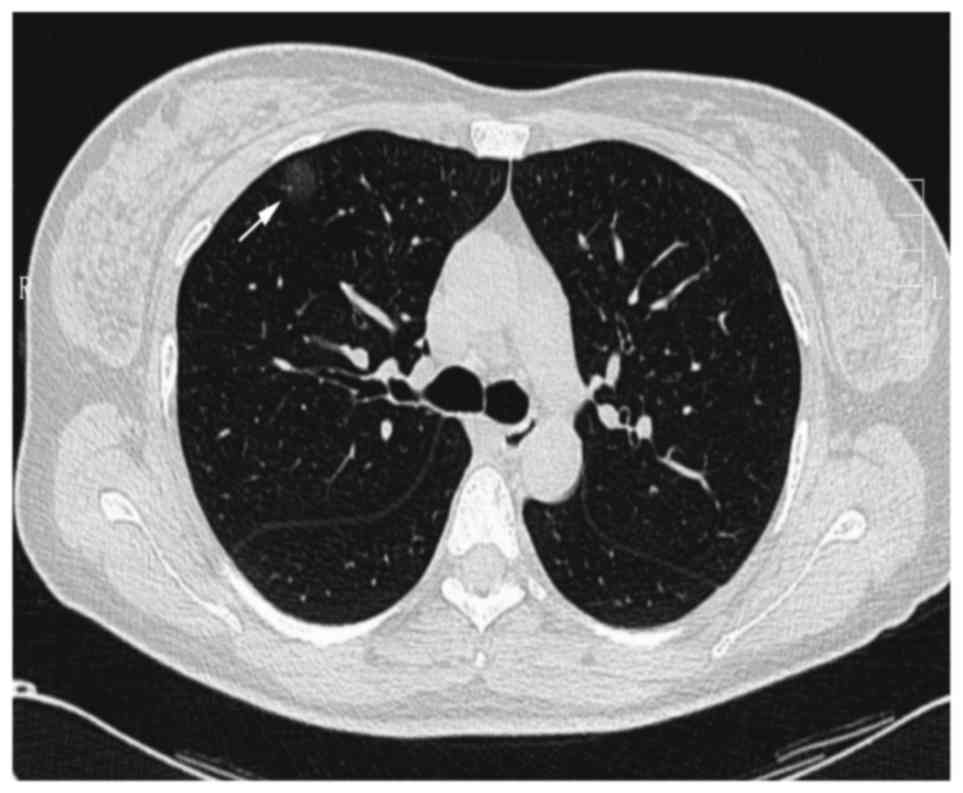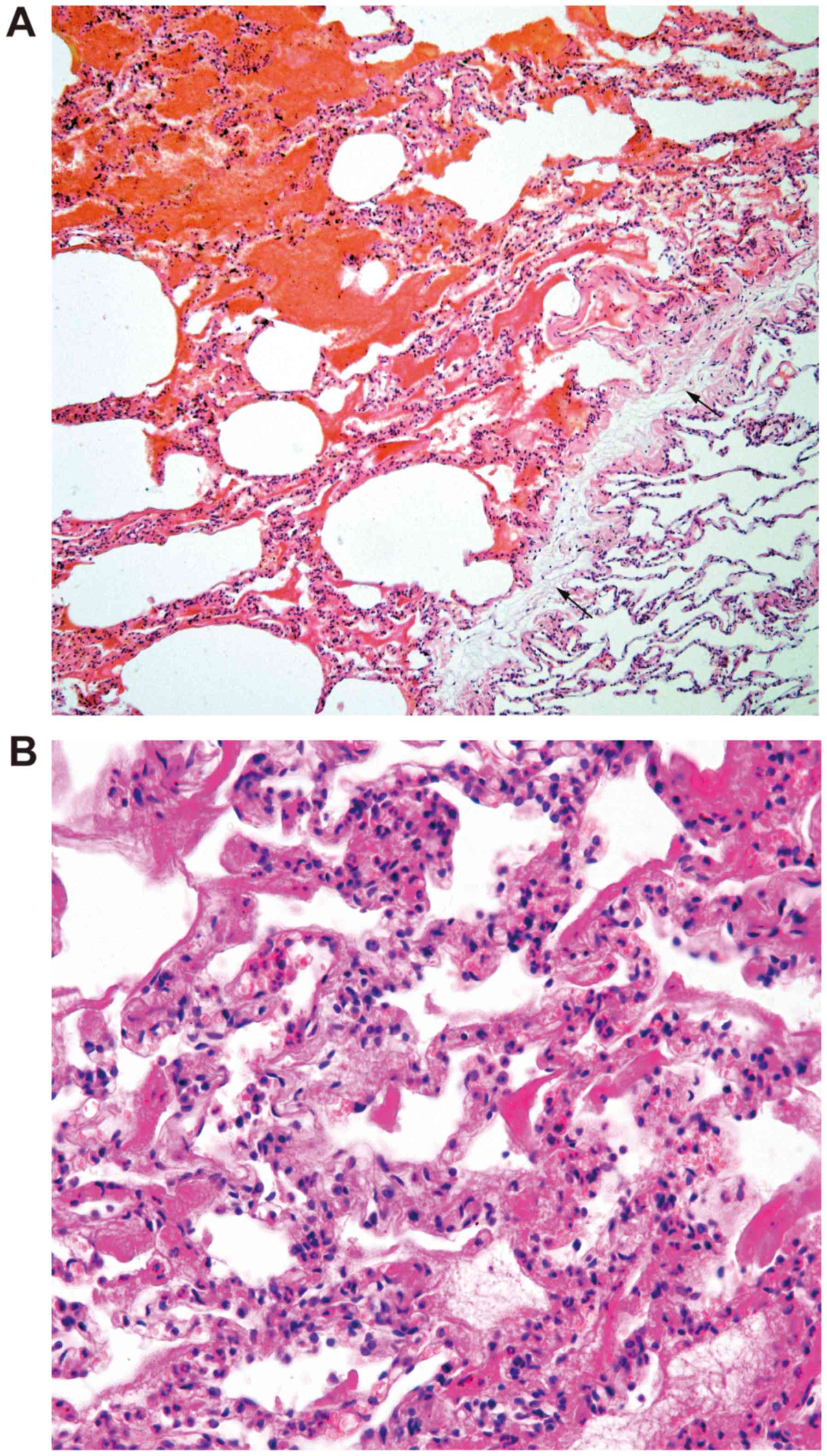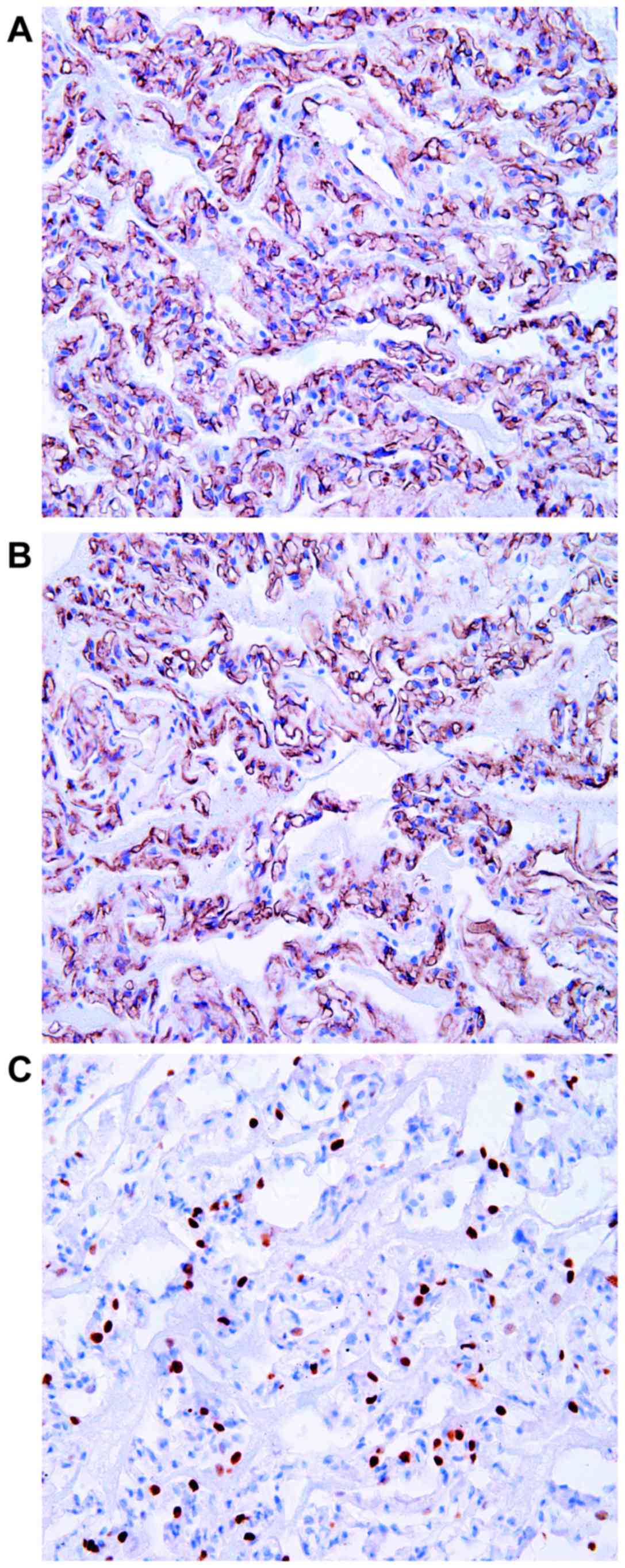Solitary pulmonary capillary hemangioma presents as ground glass opacity on computed tomography indicating adenocarcinoma in situ/atypical adenomatous hyperplasia: A case report
- Authors:
- Published online on: October 9, 2017 https://doi.org/10.3892/br.2017.997
- Pages: 515-519
-
Copyright: © Zhu et al. This is an open access article distributed under the terms of Creative Commons Attribution License.
Metrics: Total
Views: 0 (Spandidos Publications: | PMC Statistics: )
Total PDF Downloads: 0 (Spandidos Publications: | PMC Statistics: )
Abstract
Solitary pulmonary capillary hemangioma (SPCH) is a rare type of benign lung tumor, which must be distinguished from early lung cancer and precancerous lesions of the lung that manifest in a similar way upon imaging. The current study describes a case of SPCH and a review of the literature is performed. The patient was a 40-year-old Chinese woman who was referred to the Liaoning Cancer Hospital and Institute (Shenyang, China) in October, 2015 with a cough without obvious inducement. Computed tomography (CT) demonstrated pure ground glass opacity (GGO) in the right upper lung. Following systemic anti-inflammatory therapy over 6 months, the lesion did not exhibit any change on CT and was suspected to be an adenocarcinoma in situ (AIS) or atypical adenomatous hyperplasia (AAH). Video‑assisted thoracic surgery wedge resection was subsequently performed. Frozen section diagnosis revealed a benign tumor without atypical epithelial cells. Subsequent to surgery, paraffin sections demonstrated that the tumor contained narrow alveolar cavities, thickened alveolar septa and a clear boundary separating it from healthy lung tissue. Furthermore, the proliferation lumens in the alveolar septa were lined with a single layer of flat cells. Immunohistochemical staining revealed that the flat cells were positive for cluster of differentiation CD31 and CD34, and negative for thyroid transcription factor-1 and cytokeratin. The proliferation of capillary vessels lead to the thickened alveolar septa and the tumor was diagnosed as SPCH. When imaging examination demonstrates a GGO in lung, SPCH must be considered in the differential diagnosis of AIS/AAH. As the prognosis of these lesions is entirely different, a pathological examination must be conducted to ensure a correct diagnosis.












